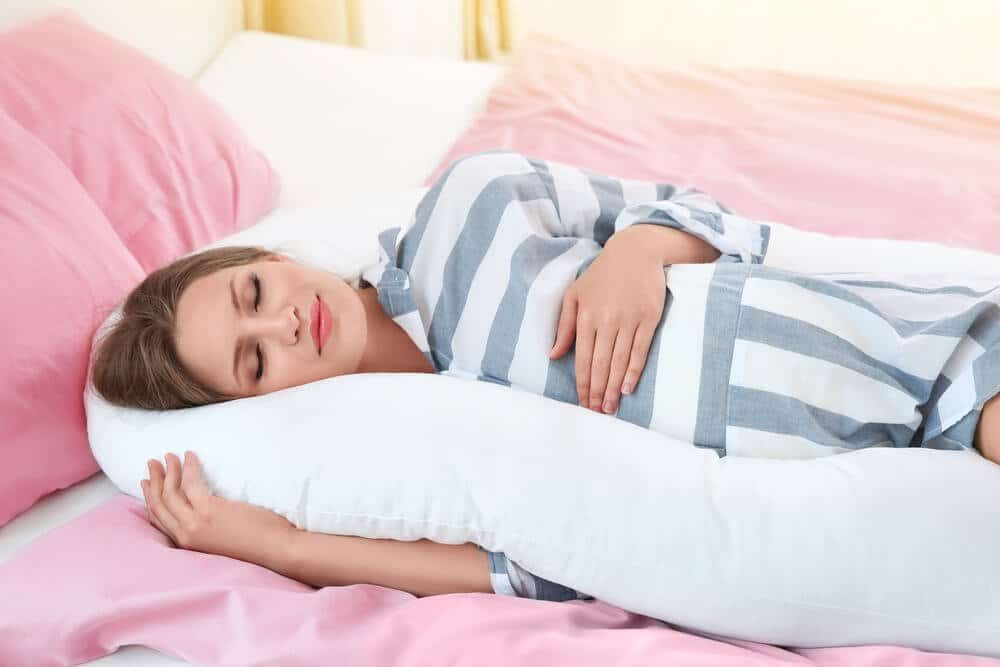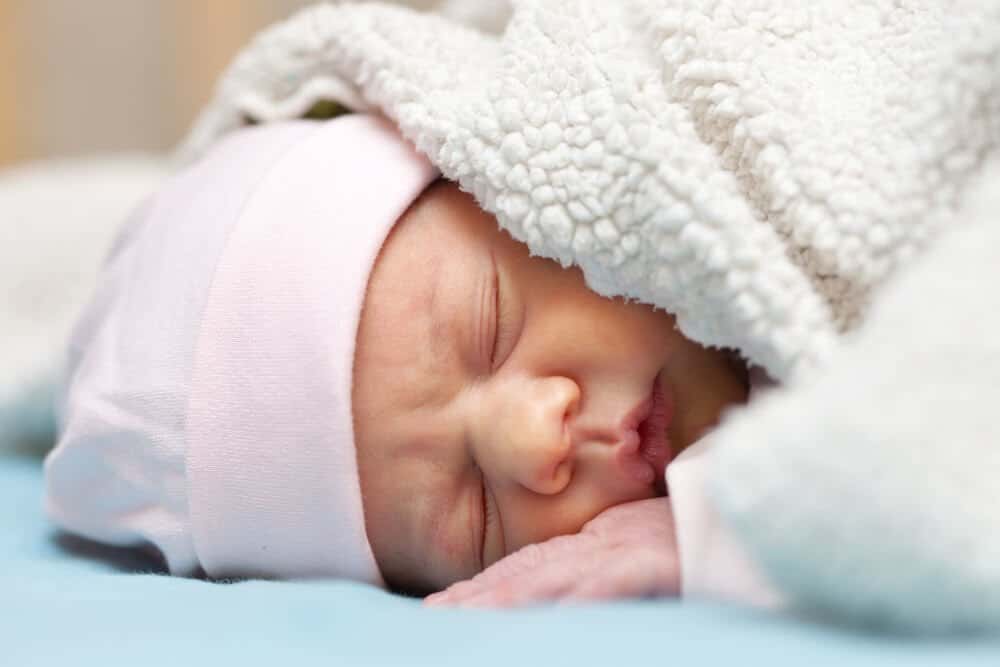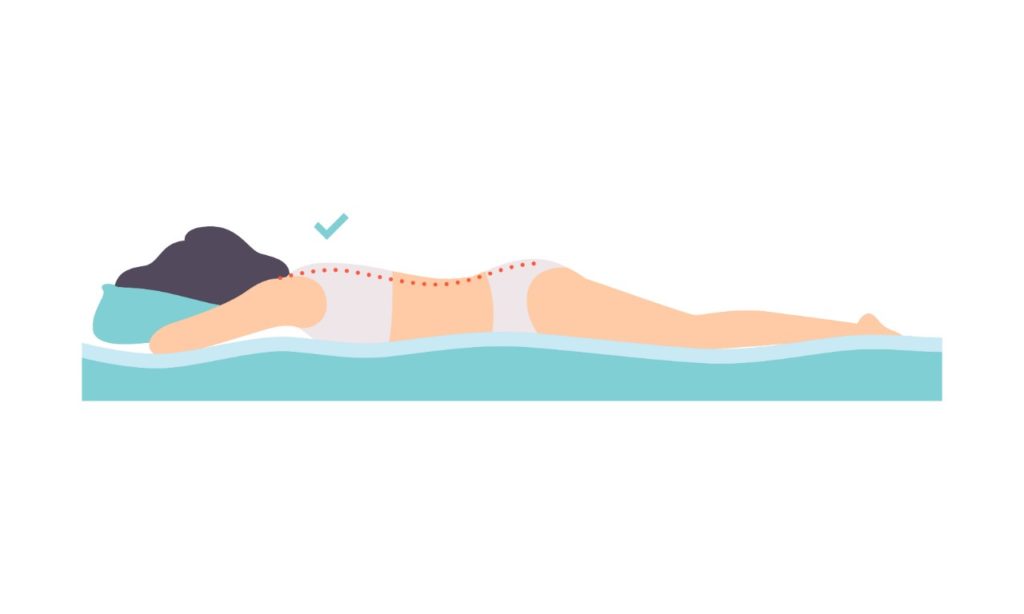Everyone has their preferences when it comes to sleeping positions. Studies show, though, that resting on the stomach is the least popular way to catch some Z’s, with most people opting for rest on their sides or backs.[1] Why is prone resting so unpopular? There’s no definitive reason, but some speculate that most people intuitively avoid this position to protect themselves. In other words, many people may instinctively avoid resting on their bellies because it creates health issues.
So, is the sleeping on stomach position bad? The answer is a little more complex than a simple yes or no. Like the other sleeping positions, it’s possible to derive some benefits from stomach sleeping—so long as it’s done correctly. However, there’s also no denying that this position won’t work well for everyone.
What Happens When Sleeping on Stomach?
How can someone decide if stomach sleeping is right for them? To answer that, it might help to know just what research says can happen when people slumber face down. Some of the most notable consequences of sleeping this way include:
1. It Can Reduce Snoring

Suffering from snoring? It’s less likely when slumbering face-down. Research suggests that resting prone can decrease the risk of snoring compared to resting supine.[2]
2. It Might Help with Sleep Apnea

Those who suffer from sleep apnea might also notice some benefits from this sleep posture. Studies suggest that sleeping face up is the position most likely to exacerbate this condition. Side and stomach sleeping? Not so much.[3]
3. It May Create Extra Neck and Back Tension

Unfortunately, it’s incredibly easy to sleep incorrectly when resting face down. When this happens, people can misalign their necks, shoulders, and backs. The result? They place unnecessary tension on these sensitive areas, which can result in discomfort, aches, and pains when they wake up.[4,5]
4. It May Cause Discomfort During Pregnancy

It might come as no surprise that doctors do not recommend stomach sleeping for those who are expecting. This fact is certainly something to keep in mind during the earlier stages of pregnancy; however, during late-stage pregnancy, it might not be possible to shift into this position at all.[6]
The best sleeping position for pregnancy? On the side, specifically the left side in a fetal position. This position is optimal for delivering the best blood flow to the fetus, as well as to the parent’s uterus and kidneys. Left-side sleeping also means the uterus won’t lay directly on the liver (which is on the right side of the body).[7]
Switching to a fetal position might be hard at first, but it will likely become easier as pregnancy progresses. There’s also the option to invest in specially designed pregnancy pillows that may make side sleeping easier.
5. It Increases Serious Health Risks in Infants

When it comes to infants and sleeping, research suggests that face up is the safest way to go. Slumbering in other positions can place babies at higher risk for some serious medical complications, including death. Sudden infant death syndrome (SIDS) refers to the inexplicable death of infants. In the United States, about 1,400 infants died from SIDS in 2017.[8] As the name suggests, experts currently don’t know the exact causes behind why SIDS occurs. However, there is a noticeable link between infant sleeping position and SIDS.
Research specifically shows an increased risk of SIDS when infants sleep on their stomachs and sides as opposed to on their backs. Again, the exact reasons for why stomach sleeping is bad for infants is currently unknown. Experts speculate, though, that it’s much easier for infants to overheat or suffocate when resting prone.[9]
But research has linked more than just SIDS to infants sleeping prone. One study found that infants who rested face up were less likely to develop serious conditions like fevers and infections as well as less serious issues like stuffy noses.[10] So, please: let infants sleep on their backs.
How to Achieve Better Spinal Alignment with Stomach Sleeping

Research shows it’s best for pregnant people and infants to avoid stomach sleeping. But what about non-pregnant adults who can’t seem to fall asleep any other way? It’s important that they learn how to optimize this sleeping position to work for them.
No matter the sleeping posture, what’s important is ensuring proper spinal alignment. In other words, people should make sure their necks, shoulders, and backs are properly lined up to avoid creating unnecessary tension. This position, experts say, can significantly reduce the chances of waking up with aches and pains.
Improving Posture with Pillows
Investing in quality pillows—and positioning them optimally—may help stomach sleepers reduce back, shoulder, and neck pain. For example, prone resters with back pain may notice that placing a pillow under their stomachs may alleviate some tension.[11] Where the head rests, too, can also play a significant role in how much soreness people experience upon awakening.
The best pillow for stomach sleepers? It’s going to be different for everyone, but most will probably want something that’s not too big and firm or too soft. Otherwise, there’s a risk of the neck bending at uncomfortable angles, which can mean all sorts of pain and tension. Stomach sleepers may notice that their ideal pillows will be a little thinner than those of back or side sleepers. So, thinner pillows made of materials like memory foam and latex might work best.
Improving Posture with Mattresses
Like pillows, mattresses may also make a difference in sleep quality. Stomach sleepers may find that shape-conforming mattresses work best for them. That makes materials like memory foam or latex great options here.
The firmness of the bed will vary based on individual preferences, medical conditions, and weight. Lighter individuals, for instance, typically prefer firmer surfaces. Conversely, heavier people may find that softer surfaces work best for them. After all, beds with more “give” can better adjust to the curves of their bodies. As for those who don’t wish to invest in a new bed? A mattress topper can sufficiently modify their sleeping surface to suit their needs.
You can read our guide to see our picks for the best mattresses for stomach sleepers.
Final Thoughts
Stomach sleeping isn’t for everyone. However, those who find that they can’t fall asleep any other way should know that there are a few tricks to getting the most out of this position. From adjusting pillows to using a firm mattress, there’s plenty of ways to modify a sleeping surface to make it work for sleeping prone.
Terms
- Sleep apnea: A condition where someone will stop and then resume breathing multiple times as they rest.
- Sudden Infant Death Syndrome (SIDS): Refers to the loss of an infant under the age of 1 year that has no explainable cause. Back sleeping is the position associated with the lowest risk of SIDS.
References
[1]Skarpsno, E. S., Mork, P. J., Nilsen, T., & Holtermann, A. (2017). Sleep positions and nocturnal body movements based on free-living accelerometer recordings: association with demographics, lifestyle, and insomnia symptoms. Nature and science of sleep, 9: 267–275. doi:10.2147/NSS.S145777
[2][3][4]Robinson, J. (Reviewer). (2019). What’s the best position to sleep in? WebMD. Retrieved from https://www.webmd.com/sleep-disorders/best-sleep-positions
[5][11]Felson, S. (Reviewer). (2018). 5 sleep tips for back pain. WebMD. Retrieved from https://www.webmd.com/back-pain/sleep-tips-for-back-pain
[6]American Pregnancy Association. (n.d.) Sleeping positions during pregnancy. Retrieved from https://americanpregnancy.org/pregnancy-health/sleeping-positions-during-pregnancy/
[7]Hirsch, L. (Reviewer). (2016). Sleep during pregnancy. KidsHealth. Retrieved from https://kidshealth.org/en/parents/sleep-during-pregnancy.html
[8]Centers for Disease Control and Prevention. (2019). Sudden unexpected infant death and sudden infant death syndrome. Retrieved from https://www.cdc.gov/sids/data.htm
[9]Eunice Kennedy Shriver National Institute of Child Health and Human Development. (n.d.) Research on back sleeping and SIDS. Retrieved from https://safetosleep.nichd.nih.gov/research/science/backsleeping
[10]Hunt, C.E., Lesko, S.M., Vezina, R.M., McCoy, R., Corwin, M.J., Mandell, F. … Mitchell, A.A. (2003). Infant sleep position and associated health outcomes. Archives of pediatrics and adolescent medicine, 157(5).
Medical Disclaimer
This article is for reference purposes only. It should not replace the advice of a licensed professional. Do not use this article to diagnose, treat, cure, or prevent any disease or condition. Any and all health concerns should be directed to a doctor or other healthcare professional.


